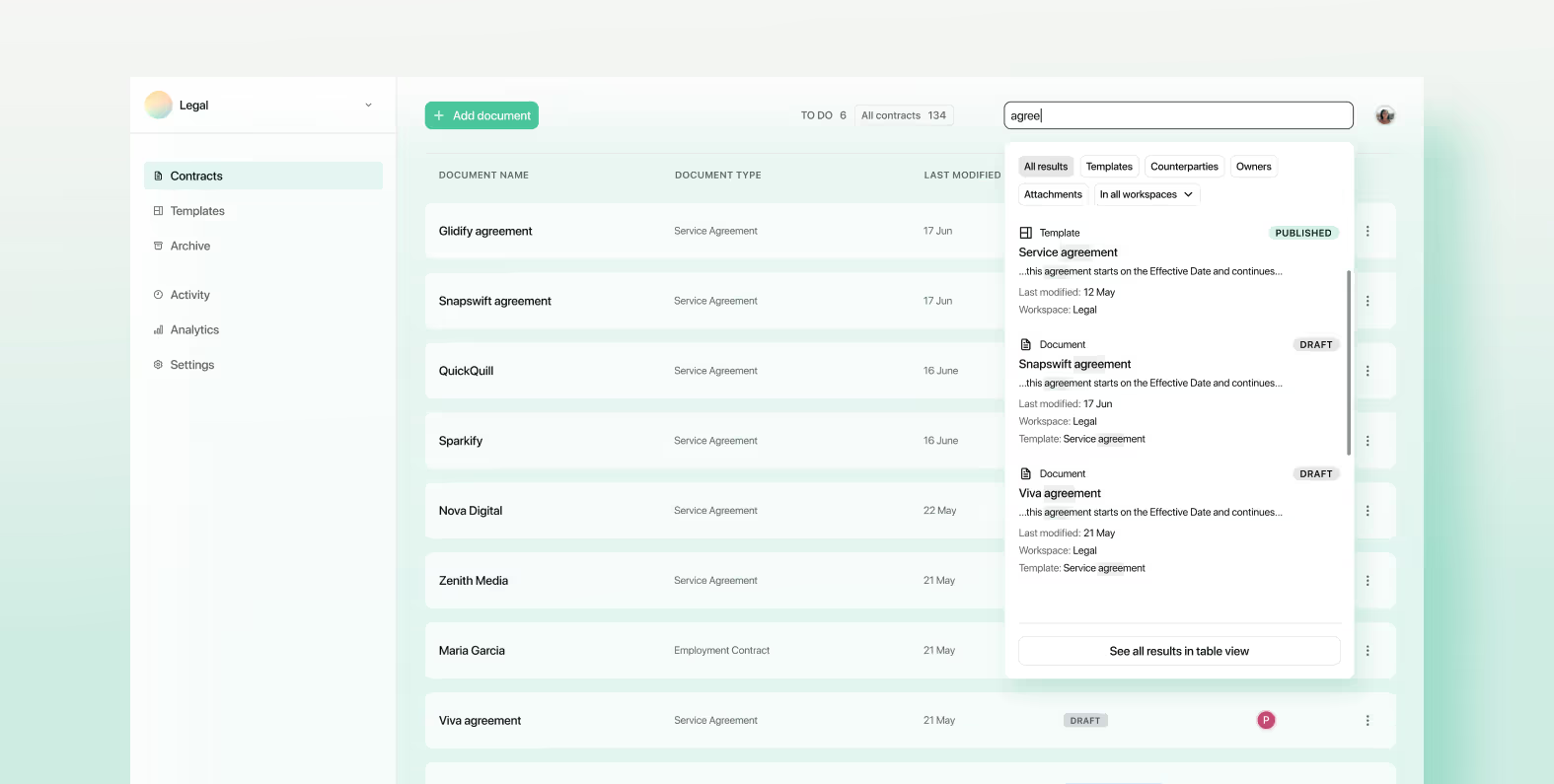Solutions
Customer Support
Resources
Looking for an Ohio commercial lease agreement template? Download this free version today.




Managing commercial lease agreements is crucial for landlords, property managers, and tenants. An Ohio commercial lease agreement template can streamline this process, ensuring compliance with state laws and protecting the rights of all parties involved.
In this article, we'll delve into what an Ohio commercial lease agreement template is, the relevant laws, its purpose, management, use cases, management challenges, and how Juro can help manage these agreements efficiently.
An Ohio commercial lease agreement is a legally binding contract between a landlord and a tenant for the rental of commercial property in Ohio. This document outlines the terms and conditions under which the tenant may use the property for business purposes.
Ohio commercial lease agreements are governed by both state and local laws. Key legal provisions include:
Understanding these laws helps ensure that the lease agreement is legally binding and enforceable in Ohio.

The primary purpose of an Ohio commercial lease agreement template is to provide a structured, legally sound framework for renting commercial property. The template ensures that all critical aspects of the lease are covered, such as:
Management of Ohio commercial lease agreements typically involves several stakeholders, including landlords, who are primarily responsible for drafting the lease, ensuring compliance with legal standards, and managing the property, and tenants, who must adhere to the terms of the lease, including paying rent on time and maintaining the premises as agreed.
Property managers might also be involved, often hired by landlords to handle the day-to-day management of the property, including maintenance and tenant relations, while legal professionals may be involved in drafting and reviewing the lease to ensure it complies with all relevant laws and protects the interests of the parties involved.

Ohio commercial lease agreements are used in various scenarios, including:
Each use case may require specific provisions tailored to the nature of the business and property type.
Key elements typically included in an Ohio commercial lease agreement are:

Managing Ohio commercial lease agreements involves several steps:
Managing Ohio commercial lease agreements can present several challenges:
Effective contract management is crucial for real estate businesses. Juro’s contract management tool simplifies this process in several ways:
With Juro, you can create Ohio commercial lease agreements quickly using automated contract templates. These templates allow you to generate contracts by answering a series of questions, ensuring consistency and reducing errors. Built-in rules and conditions can tailor the lease to specific situations, adding or removing clauses as needed.
Juro streamlines the approval process with customizable workflows. You can set up sequences of approvers and use conditional logic to determine when and how approvals are required. This ensures that all stakeholders review and approve the lease efficiently, speeding up the process without compromising on oversight.
Managing a high volume of leases can be time-consuming. Juro's bulk actions feature allows you to sign multiple leases simultaneously. This reduces the administrative burden and accelerates the execution of contracts, helping you close deals faster.

Juro provides a centralized, data-rich repository for all your contracts. This repository makes it easy to search, filter, and report on your leases, providing visibility into your contract data. Custom table views can be created and shared across your team, ensuring everyone has access to the information they need.
Staying on top of important dates is crucial in lease management. Juro’s automated reminders ensure you never miss a deadline. You can set up notifications for key dates, such as lease renewals or rent due dates, keeping your team informed and proactive.
Juro integrates seamlessly with various real estate tools and CRMs. This integration allows you to pull transaction data directly from your CRM into the contract, streamlining the contract creation process and reducing manual data entry.
Juro’s AI-native contract automation platform empowers all teams to create, agree, execute and manage contracts up to 10x faster than traditional tools. To find out more, hit the button below to book your personalized demo.
Juro is the #1-rated contract platform globally for speed of implementation.


Juro embeds contracting in the tools business teams use every day, so they can agree and manage contracts end-to-end - while legal stays in control.
Book your demo